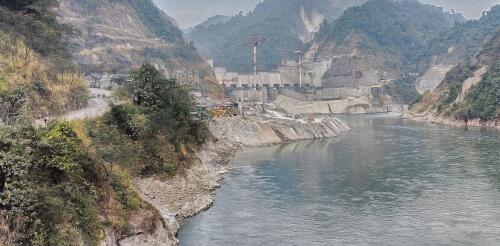Energy
Strange as it may seem, early germ theorists could tell us a lot about today’s attitudes toward climate change. While researching for a new book about the history of emerging infections, I found many similarities between early debates over the existence of microbes and current debates over the existence of global warming. Both controversies reveal the struggles of perceiving an unseen threat. Both reveal the influence of economic interests that benefit from the status quo. But most importantly, both reveal how people with different beliefs and interests can still agree on key policies and practices for tackling a global problem. What you can’t see might hurt you Seeing is believing, and until the mid-19th century, it was very difficult to see the tiny organisms responsible for our so-called “fever” diseases. Although the indirect evidence was compelling, many people remained skeptical of “animalcules” – as microorganisms were once cal...
Coast to coast, millions of Americans are experiencing sweltering temperatures this summer, with seemingly little relief in sight. For people who struggle to access or afford air conditioning, the rising need for cooling is a growing crisis. An alarming number of Americans risk losing access to utility services because they can’t pay their bills. Energy utility providers in 2022 shut off electricity to at least 3 million customers who had missed a bill payment. Over 30% of these disconnections happened in the three summer months, during a year that was among the hottest on record. In some cases, the loss of service lasted for just a few hours. But in others, people went without electricity for days or weeks while scrambling to find enough money to restore service, often only to face disconnection again. As researchers who study energy justice and energy insecurity, we believe the United States is in the midst of a disconnection crisis. We started tracking these disconnect...
“Hey Rupam, open the door. Take this fish,” a woman yelled from outside. I was sitting in the kitchen at my friend Rupam’s house in rural northeast India. It was the heart of monsoon season, and rain had been falling since morning. The woman must have been shouting because the noise of the rain on the tin roof muted everything else. The aunty who lived next door stood outside with a large bowl of Boriala fish. Her husband had gone fishing on the Subansiri River, which flows next to the village, and he had fished all evening. “My husband cannot stay indoors in this weather,” she said in Assamese, the local language. “You can catch a lot of fish during this time.” The monsoon season has long brought a bounty of fish from May to September for people living downstream. However, this is likely to change once the Subansiri Lower Hydroelectric Project, one of the largest hydropower dams in India, is completed upstream. Expected to be fully op...
The U.S. has a long record of extracting resources on Native lands and ignoring tribal opposition, but a decision by federal energy regulators to deny permits for seven proposed hydropower projects suggests that tide may be turning. As the U.S. shifts from fossil fuels to clean energy, developers are looking for sites to generate electricity from renewable sources. But in an unexpected move, the Federal Energy Regulatory Commission denied permits on Feb. 15, 2024, for seven proposed hydropower projects in Arizona and New Mexico. The reason: These projects were located within the Navajo Nation and were proposed without first consulting with the tribe. FERC said it was “establishing a new policy that the Commission will not issue preliminary permits for projects proposing to use Tribal lands if the Tribe on whose lands the project is to be located opposes the permit.” We are a cultural anthropologist and a water resource geographer who have studied tensions between...
During the most recent total solar eclipse visible in the U.S., on Aug. 21, 2017, the skies darkened as the Moon crossed in front of the Sun. It blocked out all sunlight – except for that from a golden ring visible around the Moon’s shape, called the corona. Not surprisingly, solar power generation across North America plummeted for several hours, from the first moment the Moon began to obscure the Sun to when the Sun’s disk was clear again. On April 8, 2024, another total solar eclipse will track across the U.S., causing perhaps an even greater loss of solar power generation. Although this will be the second total solar eclipse visible in the U.S. in under seven years, these events are a rare occurrence. Nevertheless, they present a unique challenge to power grid operators. I am a space scientist with a passion for teaching physics and astronomy. Though I have seen many partial eclipses of the Sun, I have yet to witness a total solar eclipse. My road trip to...




